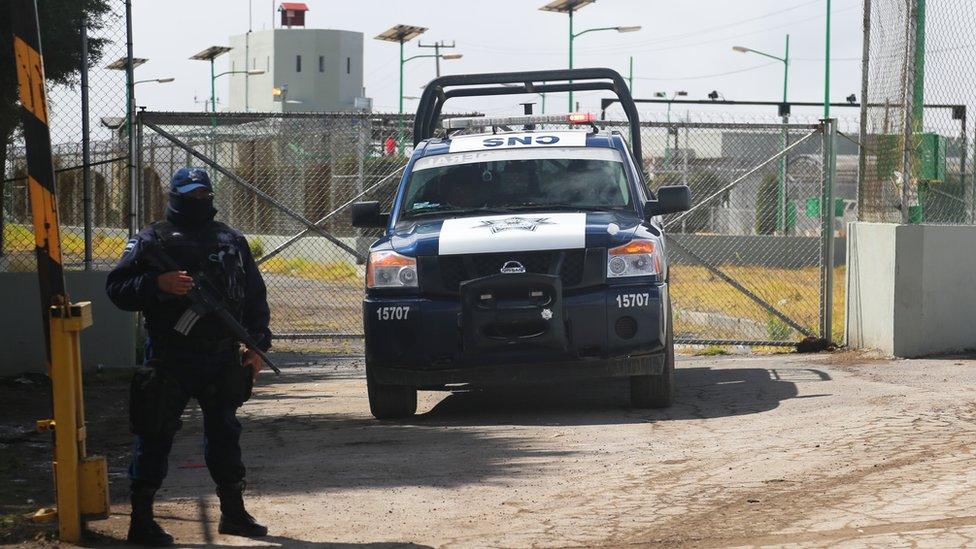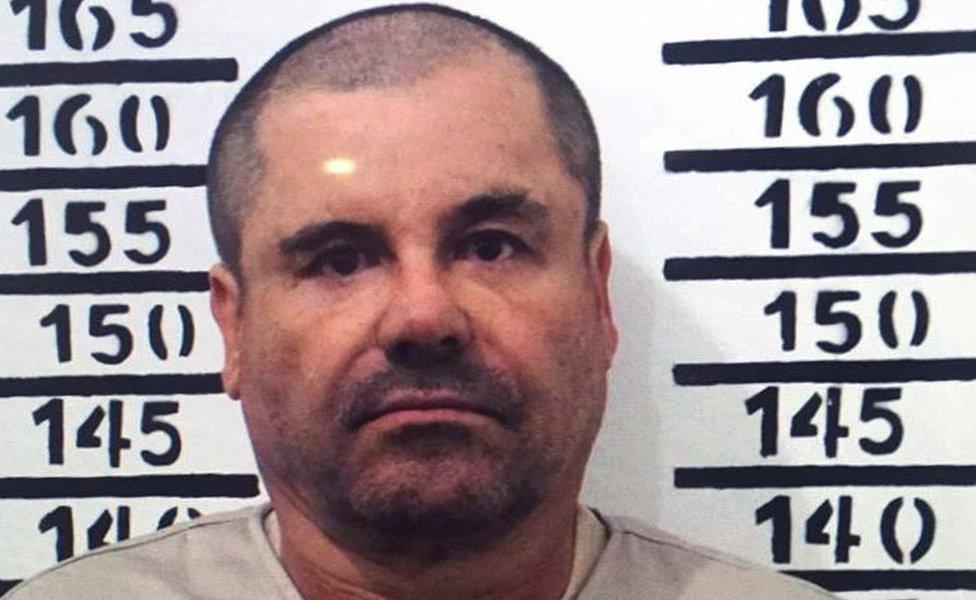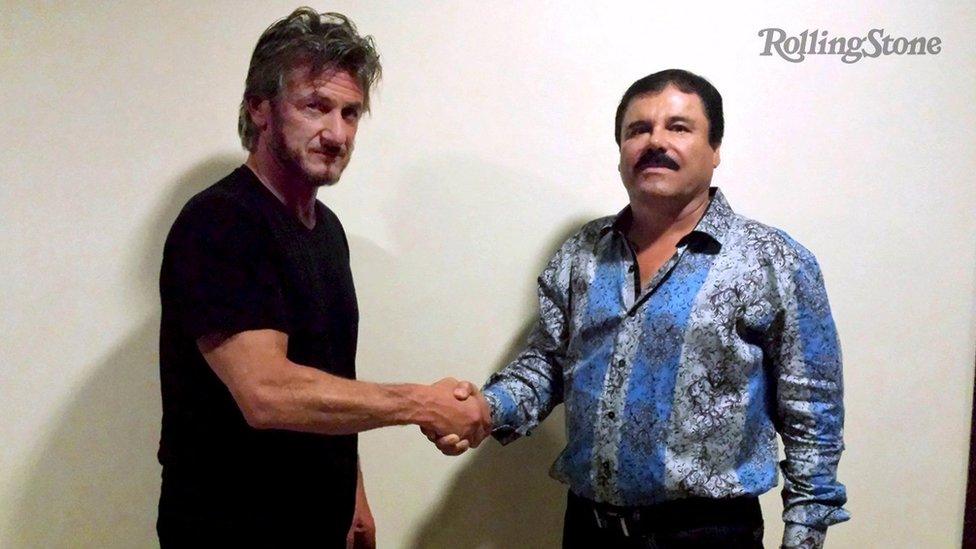El Chapo arrest: How authorities hope to stop another escape
- Published

There will soon be an elite team dedicated to watching El Chapo around the clock
Federal Social Readaptation Centre Number One - or as it is more commonly known, El Altiplano - sits on a flat plain about an hour and a half's drive from Mexico City.
You can see the tall blue and grey watchtowers rising above the horizon. This is the current home of Joaquin "El Chapo" Guzman, the country's most notorious drug lord who set up the Sinaloa cartel in the late 1980s.
It is also the prison from which he escaped last July, down a a 1.5km-long (one mile-long) tunnel.
As you approach the prison, you have to go through a military checkpoint, tanks parked alongside. There are lots of federal police milling around closer to the fence.
Outside the prison gates, there is a taco stand doling out lunch to guards. Stray dogs are stretched out in the afternoon sun and construction workers are busy making improvements to the prison.
El Altiplano is one of three maximum-security prisons in Mexico that are based on the same design. Federal Social Readaptation Centre Number Two, or Puente Grande in Jalisco state, was where El Chapo first escaped in 2001.
The official line was that he hid in a laundry cart, although people close to the prisons system tell me he actually walked out dressed in police uniform.
The third prison is in Matamoros in the northern state of Tamaulipas.

If El Chapo does escape El Altiplano, there are tanks waiting outside
The National Security Commission, which runs Mexico's federal prisons, last weekend paid a visit to El Altiplano to ensure its security was up to scratch. After a four-hour tour, officials concluded that the prison met international standards.
Sources in the Mexican government have also told me that there will soon be 10 times the number of cameras there used to be in El Altiplano. There will also be an elite team dedicated to watching El Chapo around the clock.
Not only that, but he will move cells on a regular basis - sometimes spending just a few hours or days in a one. Floors have been reinforced and there is a host of other improvements they have made to make sure there is not a third escape.
"You can have a high-security prison, but if he's given the key, it's no longer high-security," said one expert who has worked in the federal prison system for years but did not want to be identified.
The problem he sees is that the prison buildings and security systems in these maximum-security prisons are first-rate but often the people running them are not well-trained - nor trustworthy - so it means nothing.
Corruption, intimidation
The drugs boss, it seems, is not happy. This week it was reported that El Chapo's lawyers were set to file a legal challenge against him being held in isolation.
But how long can the government keep up these special measures?
"I'm not sure that will hold for the medium term because there are going to be other priorities coming along," says Alejandro Hope, a security analyst in Mexico City.
"It's going to be a stretch for the government to spend that much money and resources on one inmate, important as he may be.
"But more importantly, he will work relentlessly to undermine those conditions - that means corruption, intimidation and legal challenges."

Mexico's government should assume El Chapo is looking to escape, one expert says
That is a fear shared by Gerardo Rodriguez Sanchez Lara, at the Centre for Studies on Impunity and Justice at the University of the Americas in Puebla.
"The Mexican government can no longer have the luxury of saying that it can give a 100% guarantee that El Chapo will pay for his crimes in a Mexican prison for the rest of his life," he says, arguing that extradition is crucial.
Sanchez Lara sees two avenues for El Chapo to escape - by illegal means such as tunnelling out or by having a good lawyer.
He cites the example of cartel leader Sandra Avila Beltran - also known as the Queen of the Pacific - who was freed last year after seven years in prison. Rafael Caro Quintero is another capo who caused uproar when he was released in 2013.
Escape plot under way?
The judicial system in Mexico is lacking he says, adding that Mexico has 3.5 judges for every 1,000 inhabitants, compared to an international average of 16.
"I think that Mexico is very vulnerable in terms of its ability to keep him," he says. "He could get out on legal questions and I think that's the most dangerous thing.
"What worries me is if he corrupts or threatens violence against judges and federal government workers who are involved in the process of extradition [US requests were filed in 2015]."
While the extradition process gets under way, it is something that El Chapo's lawyers will fight all the way. All the while, many experts expect him to be plotting his next escape.
"Don't underestimate the man's creativity," says Alejandro Hope.
"He may or may not escape but I think the working hypothesis for the Mexican government should be that he is going to try. Right now, for El Chapo, it's a race between extradition and escape."
- Published17 July 2019

- Published11 January 2016

- Published11 January 2016
